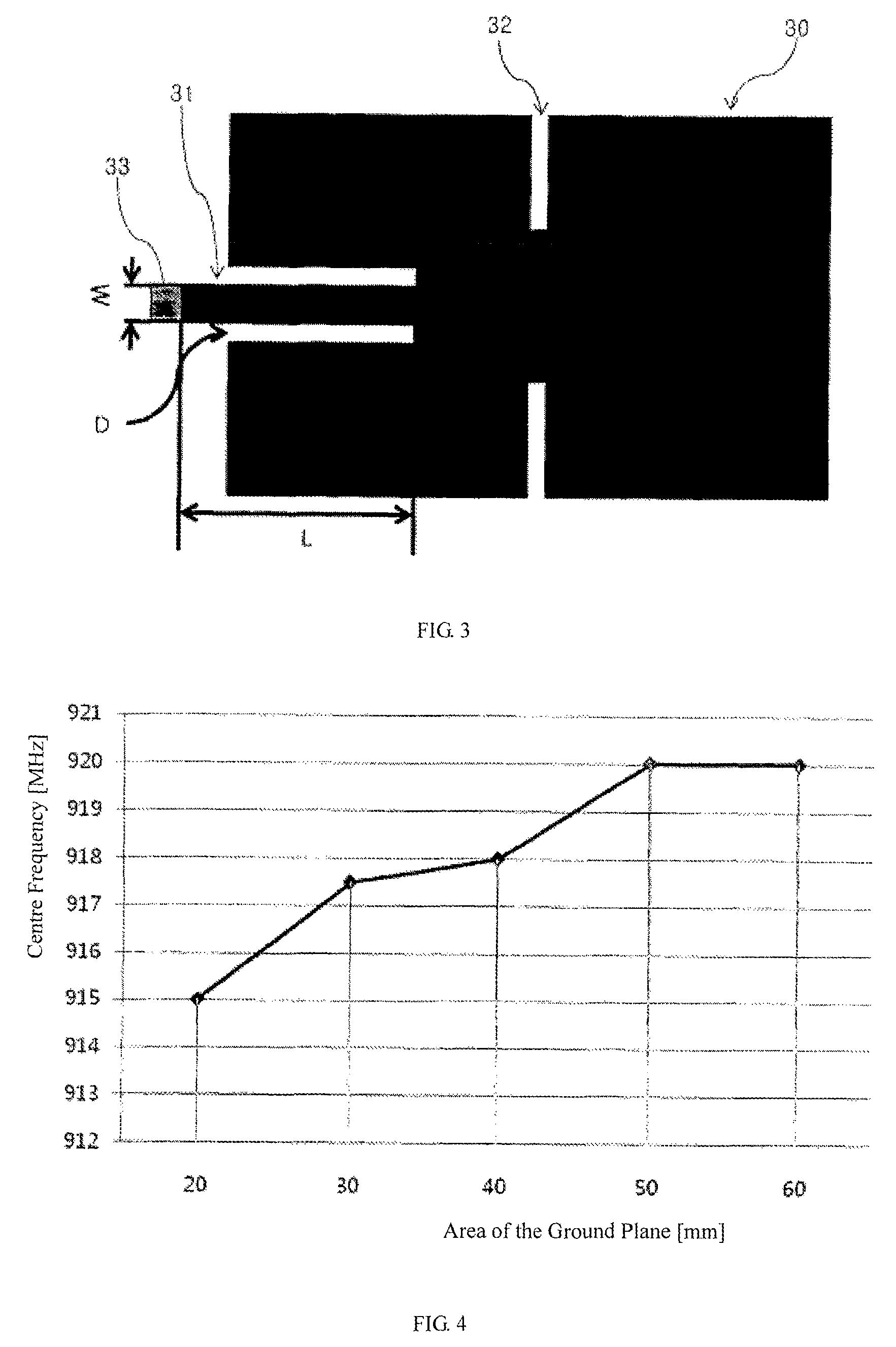Miniaturized radio-frequency identification tag and microstrip patch antenna thereof
a microstrip patch and radio frequency identification technology, applied in the direction of resonant antennas, radiating elements, instruments, etc., can solve the problems of unstable identification rate of common tags at different positions, inconvenient mass production, and inability to ensure electric power required by driving rfit chips, etc., to achieve stable identification rates in different positions and avoid lowering antenna performance.
- Summary
- Abstract
- Description
- Claims
- Application Information
AI Technical Summary
Benefits of technology
Problems solved by technology
Method used
Image
Examples
Embodiment Construction
[0033]The present invention will be further illustrated hereinafter in conjunction with the specific embodiments. The technicians in the field can easily understand other advantages and functions of the present invention according to the contents disclosed by the description. The present invention can also be implemented or applied through other different embodiments. Various modifications or changes can be made to the details of the description without deviation from the aims of the present invention according to different views and applications.
[0034]Radio frequency identification technology is a technology wherein objects are identified by attaching an electric tag onto various objects and identifying the inherent ID of the objects through wireless means. The radio frequency identification system applies to various bands in the range from the 125 kHz frequency band to 5.8 GHz microstrip according to the applicable fields.
[0035]Recently, in fields, including logistics circulation ...
PUM
 Login to View More
Login to View More Abstract
Description
Claims
Application Information
 Login to View More
Login to View More - R&D
- Intellectual Property
- Life Sciences
- Materials
- Tech Scout
- Unparalleled Data Quality
- Higher Quality Content
- 60% Fewer Hallucinations
Browse by: Latest US Patents, China's latest patents, Technical Efficacy Thesaurus, Application Domain, Technology Topic, Popular Technical Reports.
© 2025 PatSnap. All rights reserved.Legal|Privacy policy|Modern Slavery Act Transparency Statement|Sitemap|About US| Contact US: help@patsnap.com



